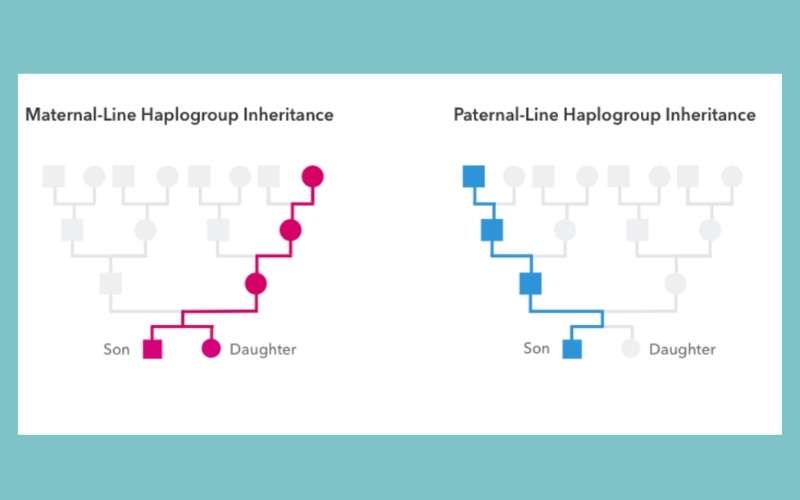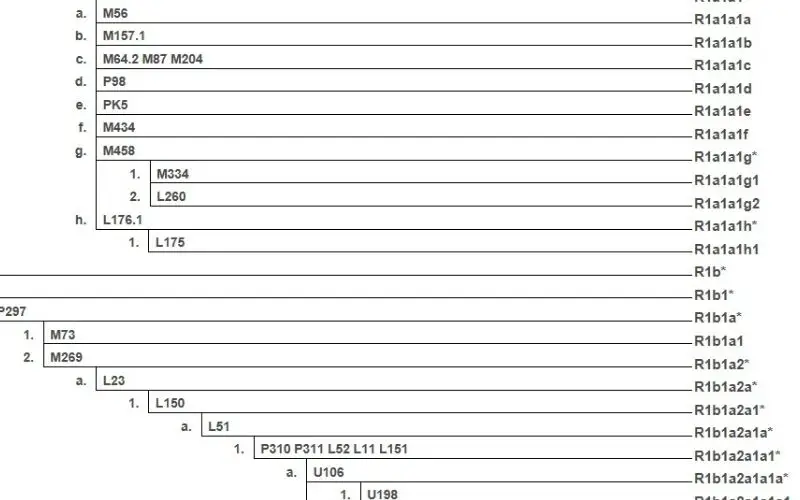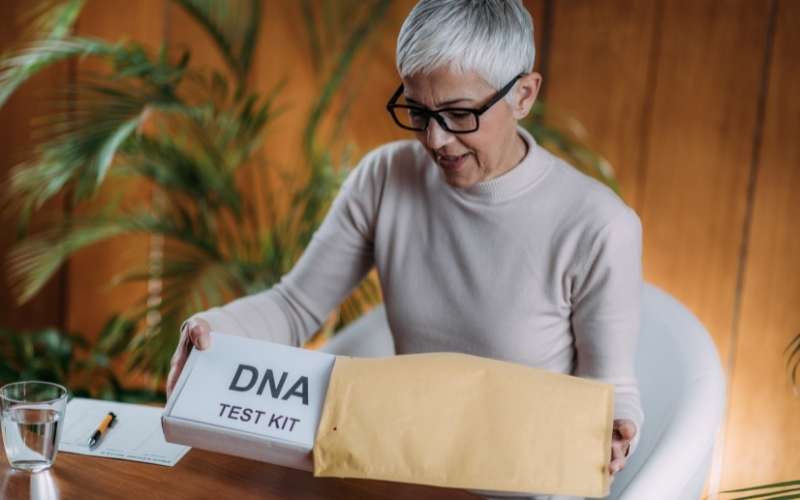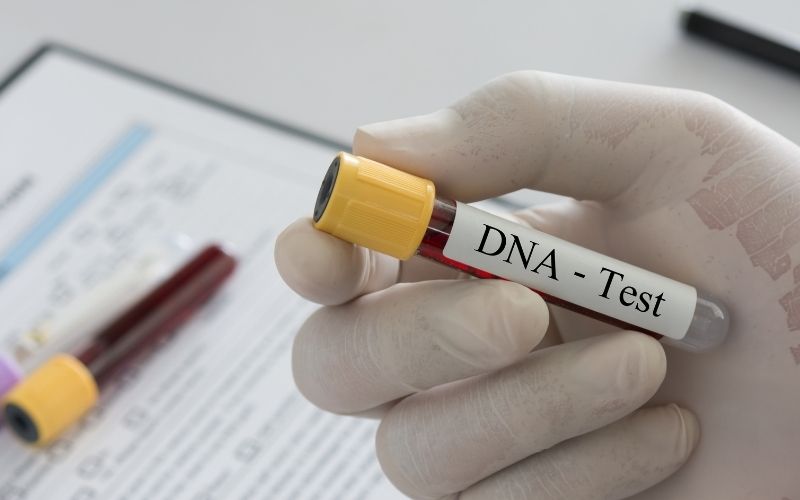Inside: We cover what haplogroups are, how to find your haplogroup and what it means for your family tree research.
For many, there’s nothing quite as exciting as getting the results back from ancestry tests. From the moment of purchase until you get the email alerting you that the numbers are in, weeks have passed.
The anticipation has built and you’ve even prepared yourself for the likelihood that something you weren’t expecting from the family tree DNA results was going to show itself.
Will it confirm family history as you know it? Or could there be a country that pops up that you’ve never heard family speak of?
Could you be linked with living relatives that you didn’t know you were related to? Are there living descendants you could chat about a common ancestor with?
There are quite a few stories from people whose entire lives have been shaken by the results. Some find out that they weren’t the ethnicity they grew up believing.
Even more shocking, some find out their parents aren’t actually their biological parents. You really have no idea what to expect.
As much as these DNA testing services can tell you about the people you are related to, they can’t offer a deeper picture of your origins.
The tests on the market usually look for autosomal DNA, which is all the fun stuff accumulated from ancestors.
To get a real look at where and when you came from, that can be found through haplogroups.
Contents
What are haplogroups?
Before we jump into finding your groups, let’s take a closer look at what exactly a haplogroup represents.
For starters, haplo is Greek for simple. The term haplogroup really stands for simple inheritance patterns.
The definition of a haplogroup is an accumulation of particular patterns that are located in our DNA.
Basically, your ancient family. By singling out patterns, DNA can be used to trace the most distant origins of your ancestry.
How are haplogroups put together?

There are two types of haplogroups. The first is the paternal haplogroup, which is traced back using the Y chromosome and is passed down from father to son.
The second is maternal and that is traced using mitochondrial DNA (mtDNA) and is passed from mothers to daughters and sons.
Most of the ingredients that come together to make you pop up at random from the parent’s DNA. That can make it a challenge to decipher what traits came from which side of the family.
The YDNA and mtDNA do not have the same problem. So, since they are traceable, what gets passed down can be directly linked.
Where is the first haplogroup from?
The original haplogroup was from Africa, where all people originated from. As the human tribes from northwest Africa began to spread out and head to different continents, the haplogroups began to expand.
As the people from Africa got further away and continued to have babies, the mutations would happen.
If you look at haplogroups like timelines of humanity, you can see migration patterns across the globe. Therefore, people who share geographic roots tend to have closely related haplogroups.
Related: The 7 Oldest Bloodlines in the World Might Surprise You
Why doesn’t everyone fall into the same haplogroup?
Since the Y chromosome, the paternal haplogroup, and mitochondrial DNA, the maternal haplogroup, aren’t shuffled around when they are passed on, it would make sense that the same ones keep being shared generation after generation.
However, new groups are formed out of mutations.
So, essentially, what happens is a haplogroup evolves as people spread out and procreate. The more people, the more possibilities for mutations.
When a mutation appears, it takes a multitude of generations with the mutation in order for it to be considered its own haplogroup.
Any mutation that is starting today would take up to 1,000 years to be classified as a haplogroup.

When we look back at our own groups, we can see the same thing. Unfortunately, there may not be accessible data to know their name or any details of their life. However, what we can discover is where they lived and when.
Are all the haplogroups still around?
Just like family lines die out, so do haplogroups. So, technically, there have been plenty that has come and gone over the natural course of time.
The main groups of today are African, Asian, European, and Native American. Within the big four haplogroups, there are a plethora of subgroups.
These help narrow down more specifically where someone originated, within the context of the main group.
This shows where the earliest non-African ancestor on the male and female side of the family came from and when they split off.
Interestingly, men with Native American ancestors have only two groups, as opposed to every other group, which has a multitude of subgroups.
How are haplogroups named?

They are named by the order in which they were discovered. They have letter and number combinations that represent where and when.
The more letters and numbers, the more you can pinpoint very specific locations. The more recent the group, the more that can be traced. It’s possible to even trace results back to a person.
It should be noted that both maternal haplogroups and paternal haplogroups use a similar naming system. It’s possible that you can find an mtDNA and YDNA group with the same letter and number after it.
While it would be easy to assume they were from the same area then, that’s not necessarily the case.
Remember, these two groups are uniquely different from one another. Number and letter associations come as they are, they don’t have to be related to the same place.
Haplogroups are the only way to trace back your roots to before last names were starting to be used.
Finding Your Haplogroup: Helpful Tips
Get your DNA tested

But not just any DNA testing. The popular DNA data test kits are a wonderful service that provides you with information on both your close and distant relatives.
It provides you with the opportunity to see your second, third, or sixth cousins.
The test results also boggle your mind with the reality that there are tens of thousands of distant relatives all over the world.
However, they don’t provide info about haplogroups. For that, you’ll need mtDNA testing or a YDNA test. Be sure to do your research before purchasing.
Related: Why Are My Ancestry and 23andme Results Different?
For Men
Understand how different haplogroups are decided. Men have the advantage of having info from both their mothers and fathers.
Fathers pass down the Y DNA to their sons. Mothers pass down their mtDNA to both daughters and sons. For maternal and paternal groups, use an mtDNA test. The Y DNA test would also work.
For Women
If you’re a woman and you’d like to know the paternal group, you will have to get a male relative with the same genetic lines.
Since women do not carry a Y chromosome, they will not be able to trace it on their DNA. However, mtDNA tests give helpful results.
How to find your mtdna haplogroup
The maternal haplogroup starts with mutations in the mtDNA. That means that both men and women are able to dive into their ancient ancestors through this type of DNA.
The most straightforward way of learning what group you fall into would be to take an mtDNA test.
How to find your haplogroup

The easiest way to determine your haplogroups is to get a DNA test through a company that tests using mtDNA or YDNA.
Services such as 23andMe give you the haplogroup data as part of their results after the DNA test has been completed.
How to find haplogroups from raw DNA data
If you’ve taken a DNA test that is not specifically for mtDNA or YDNA, such as the Ancestry autosomal test, you have the option to view your raw DNA data. Depending on which service you tested with, you can request the data and download the file.
To request, you will go into the settings listed under your profile. There’s a tab to click for downloading your raw data and it will explain what to do to get that information.
Typically, the service sends out an email to let you know when it’s ready to download.
At this point, you will want to save the file as a text document. Looking at what is written out on the page might be very confusing to the untrained eye.
There are columns and a long list of numbers under each section with letters pertaining to alleles.
In the game of life, that’s the code that created your current simulation. That’s you in text form.
Now, you can take this document to websites where an upload is all you need to get feedback on the results. They take that data and can give you more details about it, such as the haplogroup.
Be sure to pay attention to what the sites have to offer. Many offer information on YDNA groups only.
Related:

